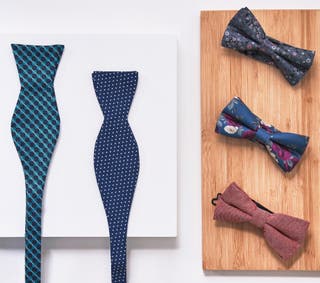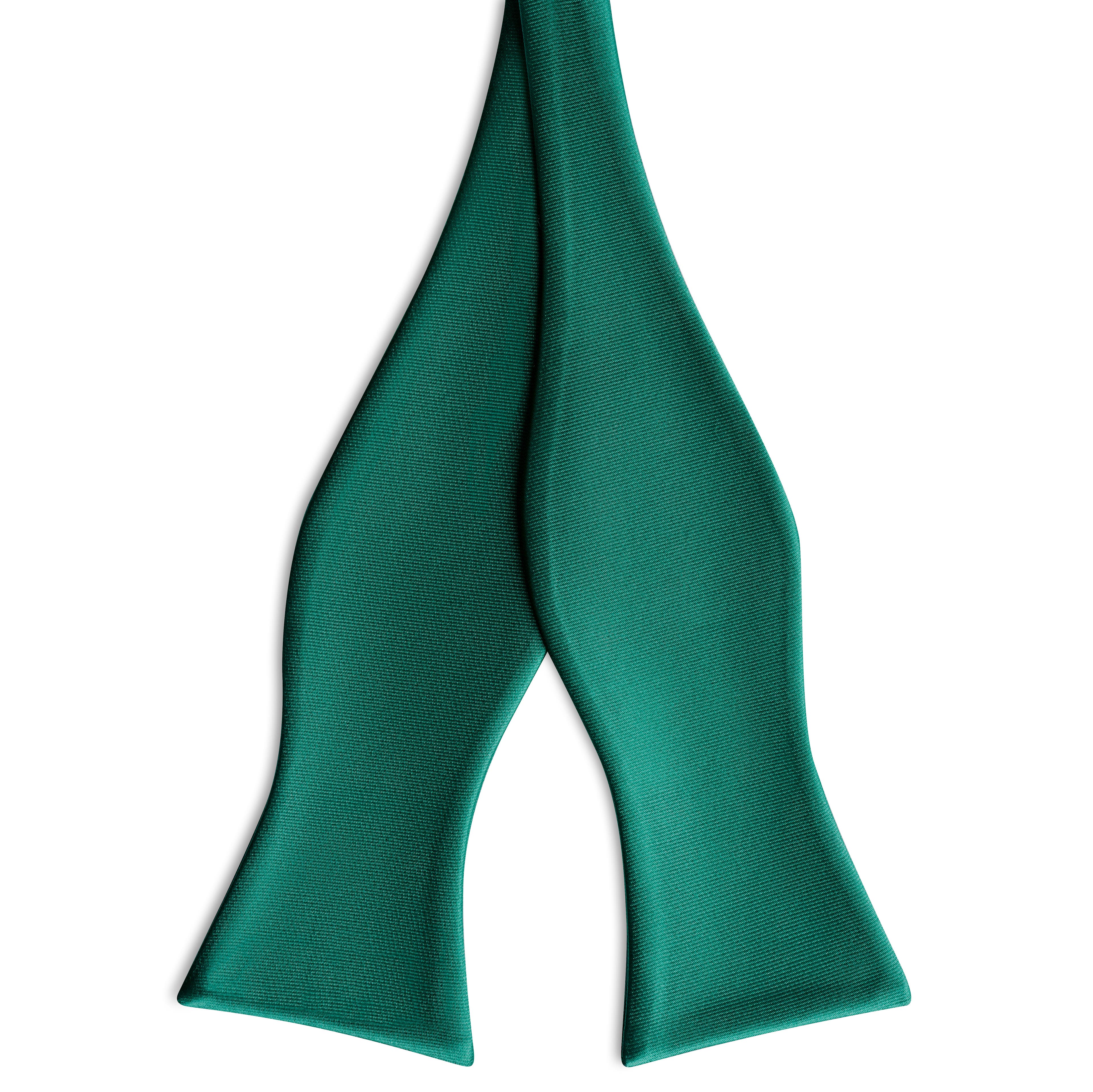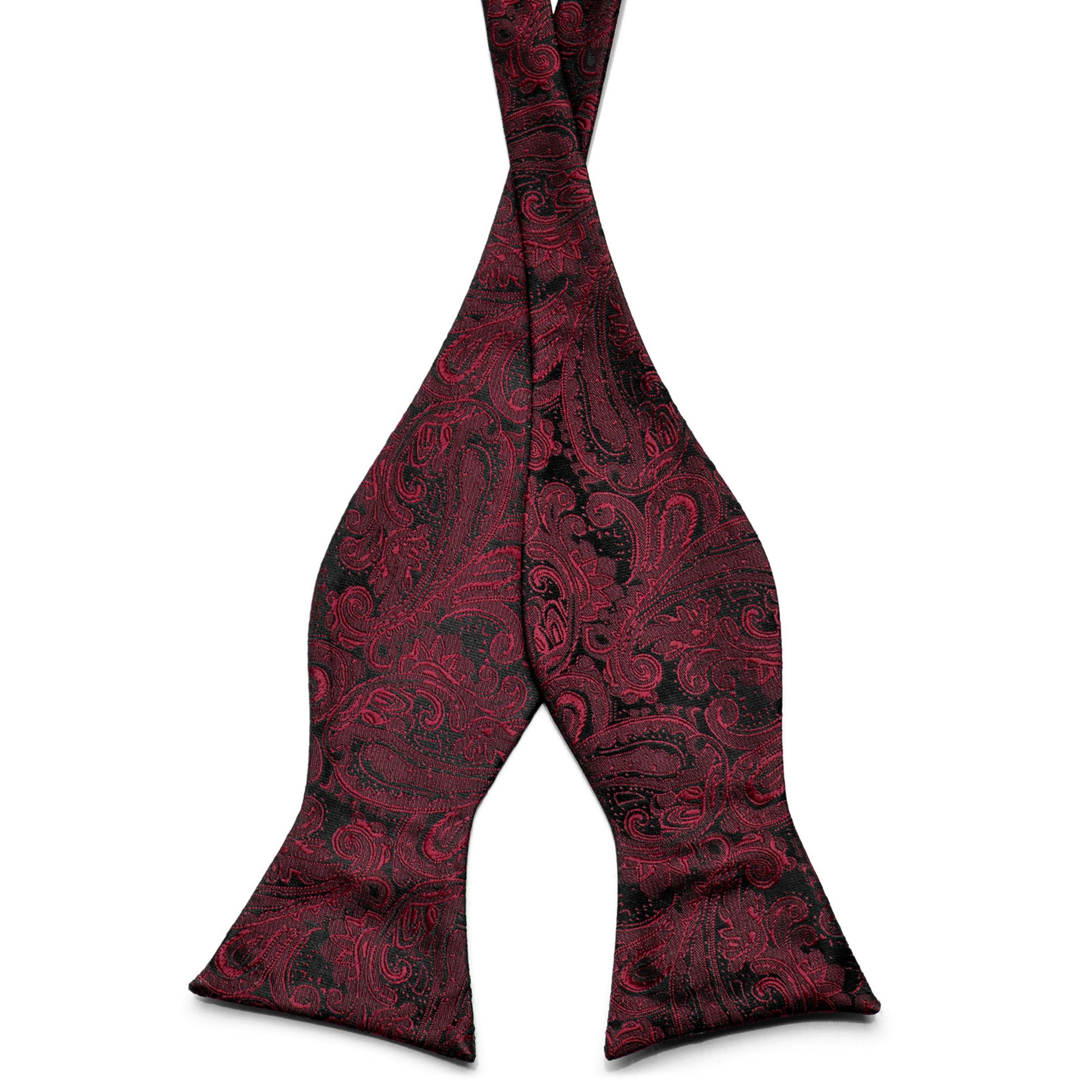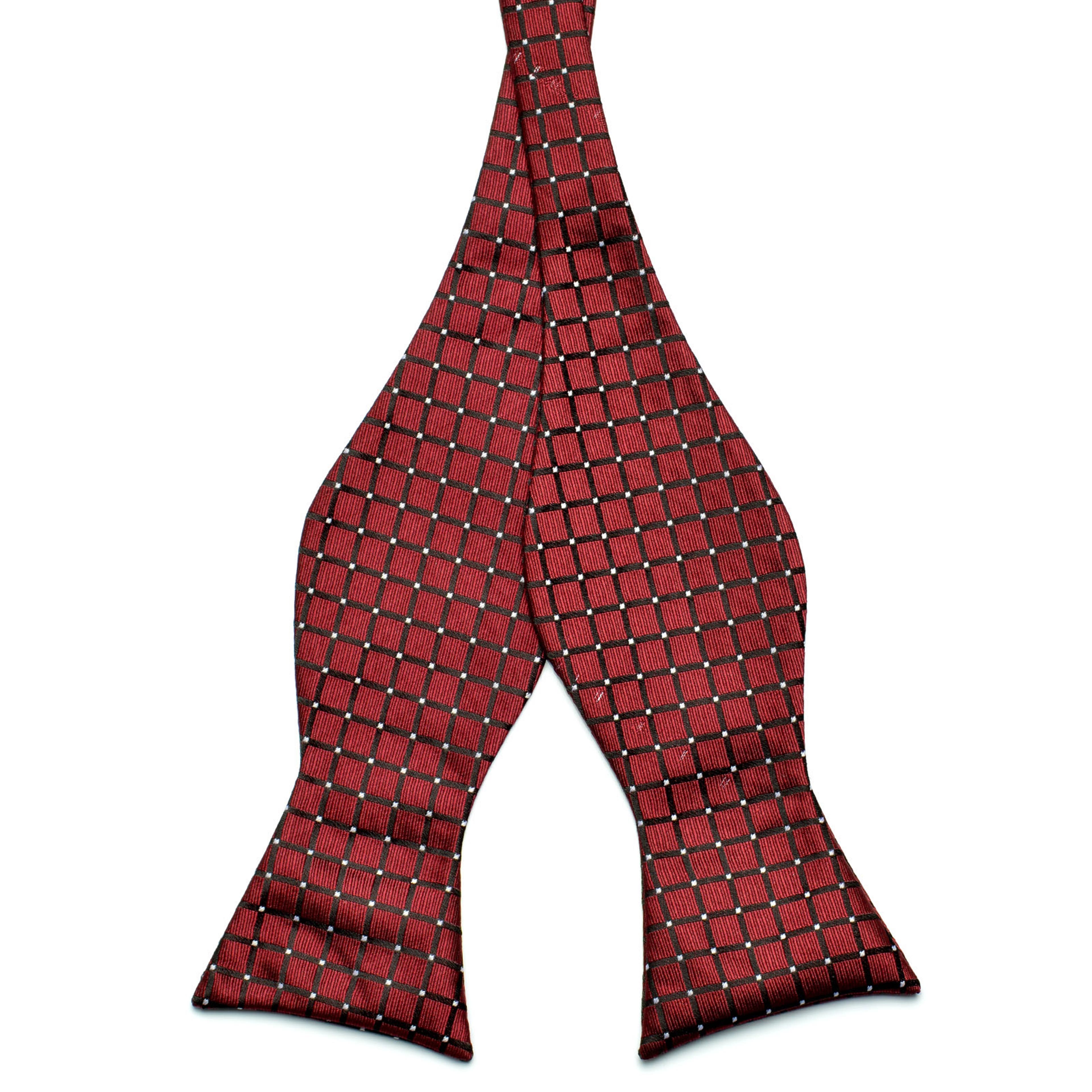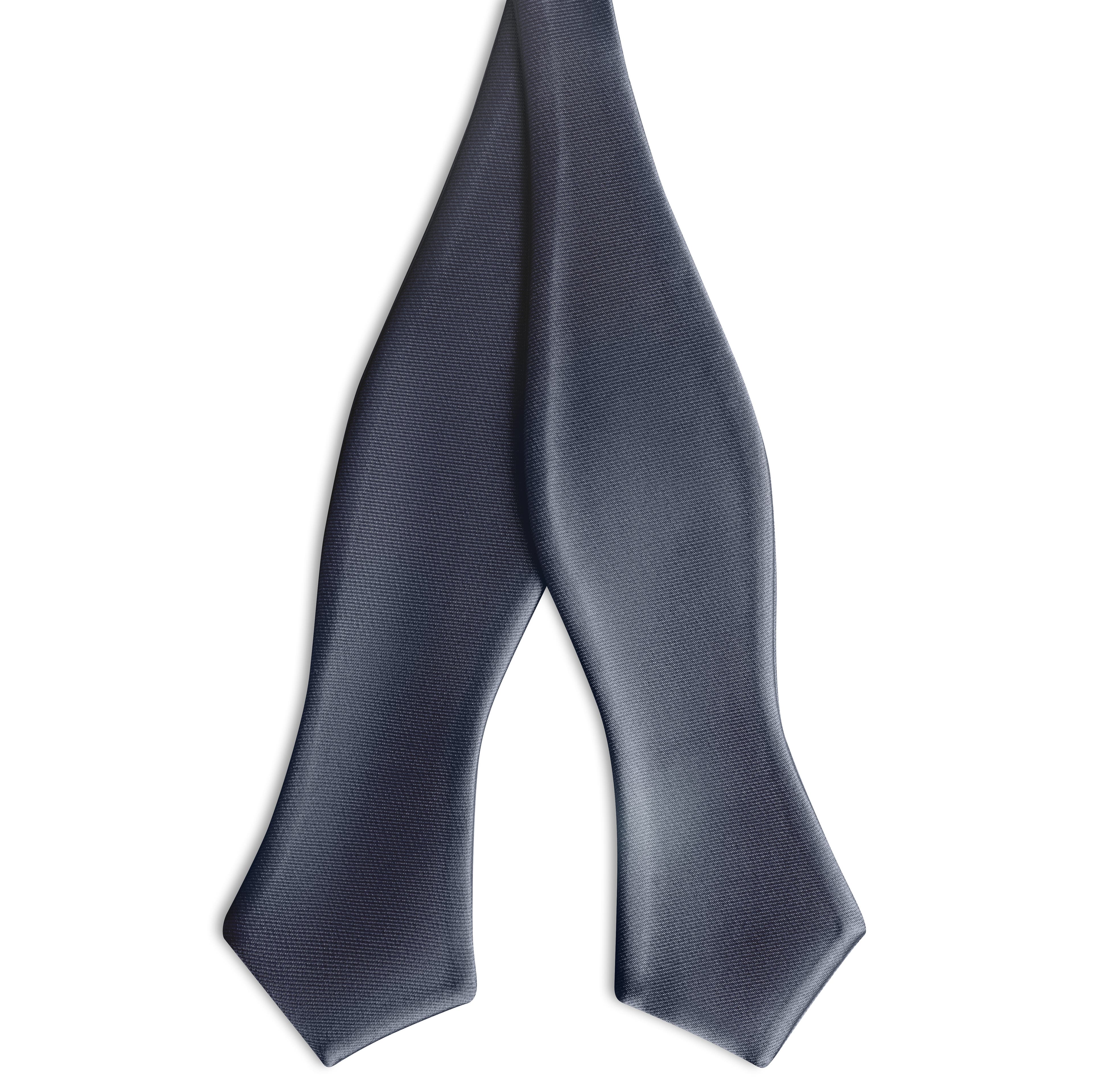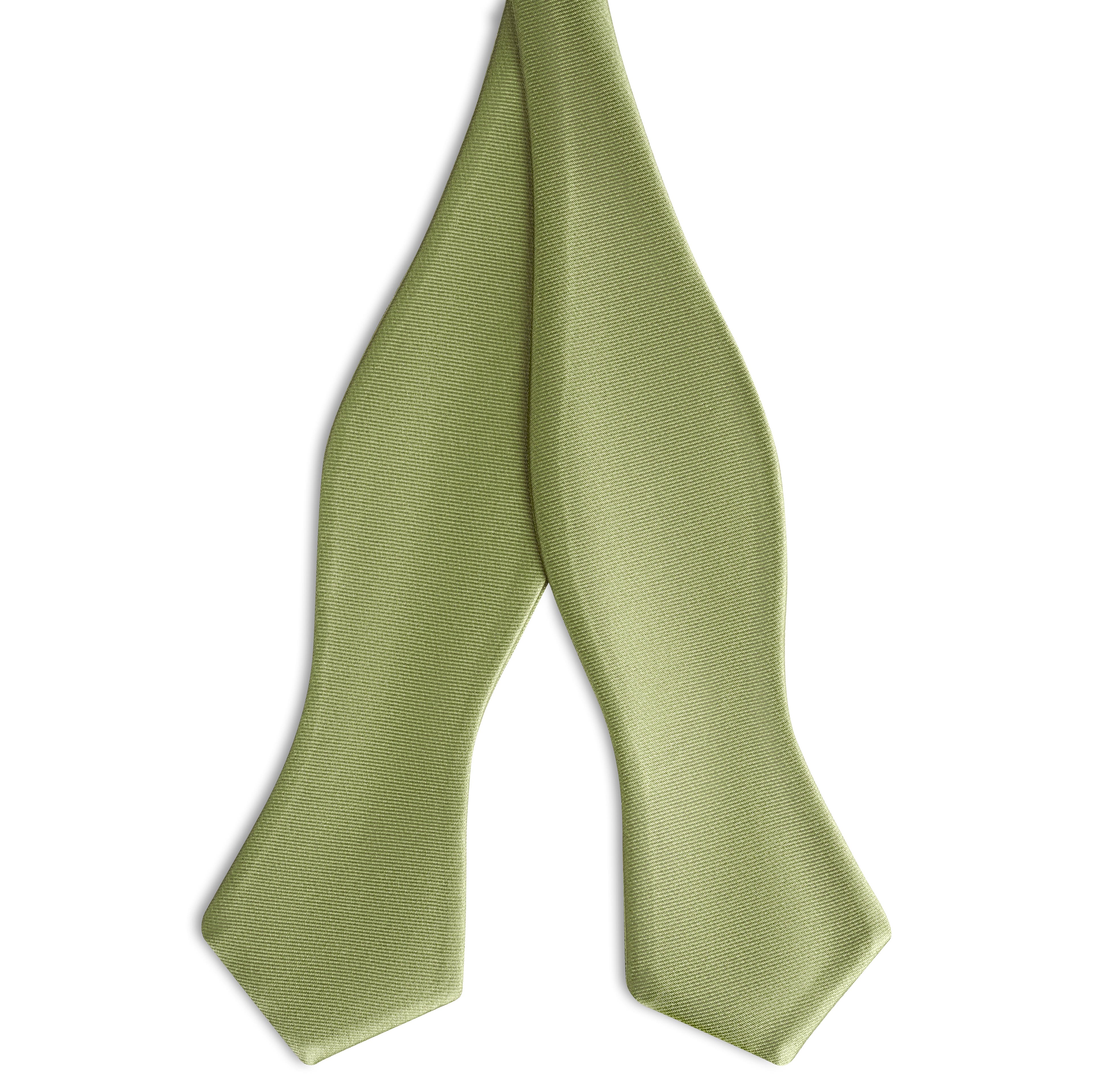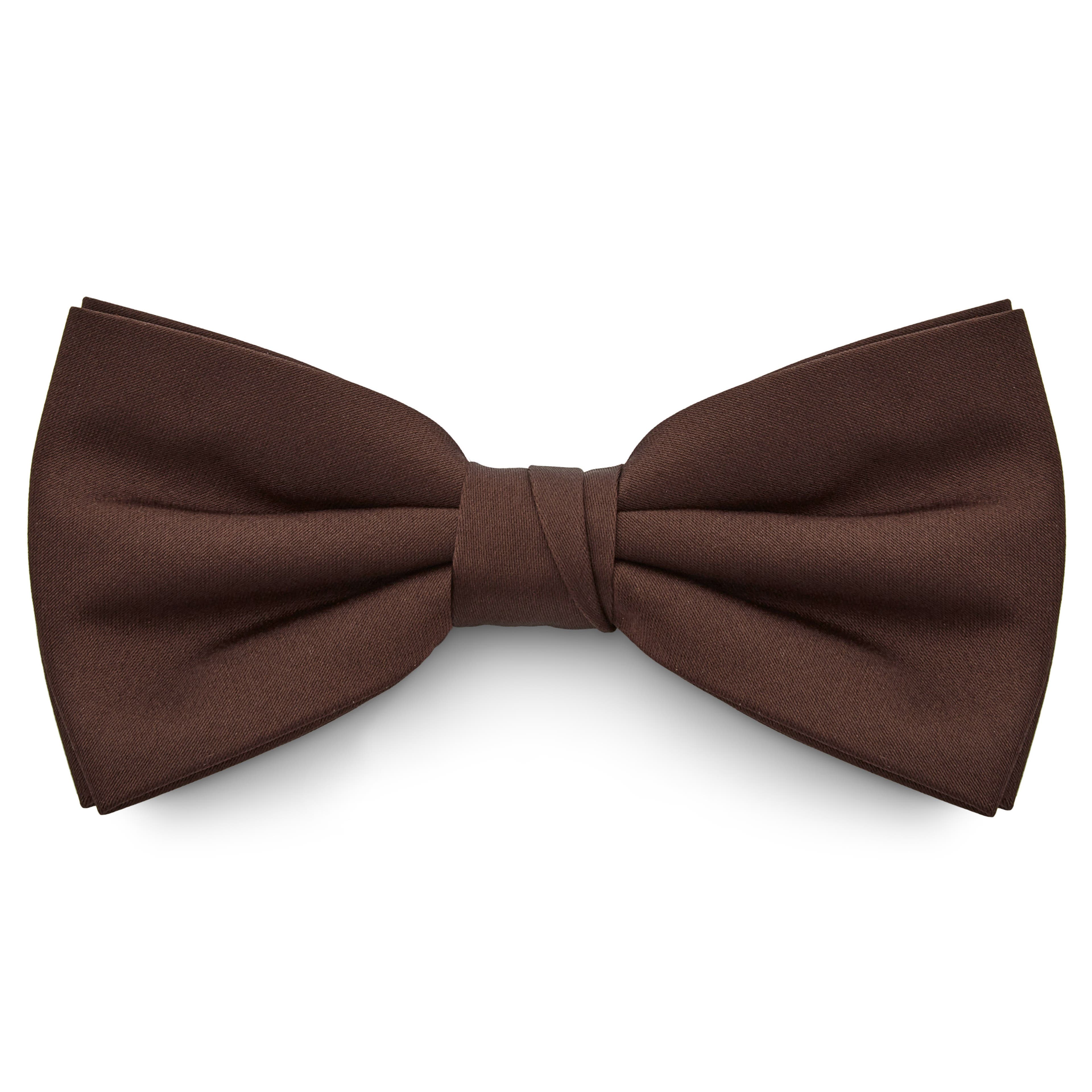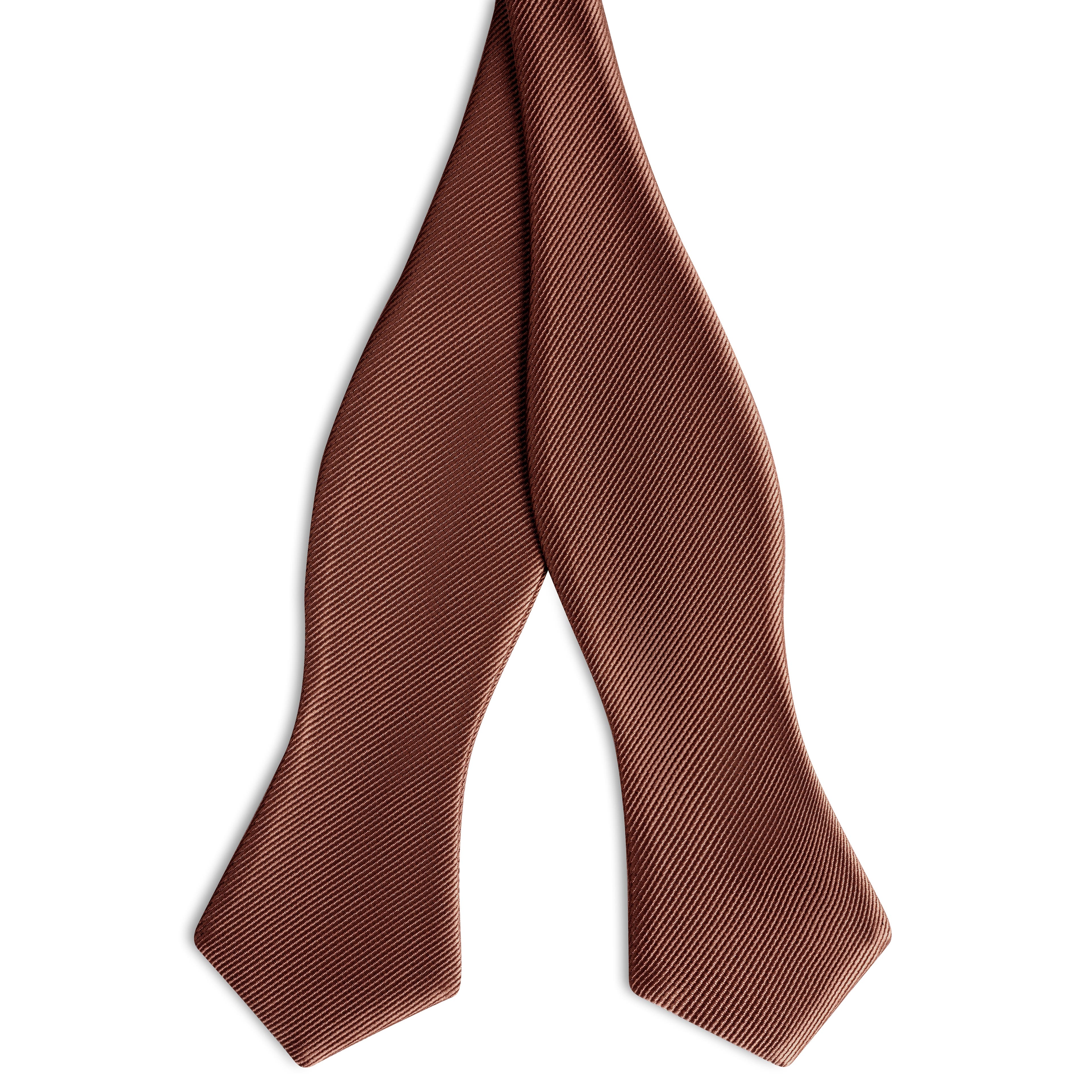How to Wear a Bow Tie (And Wear It Well)
Mastering the bow tie isn’t as tricky as you may think. In our comprehensive guide, learn how to tie a bow tie with 8 easy-to-follow steps, and see how to wear one like 007’s style double.
We think that every accessory helps tell your story. We also know that some accessories speak louder than others (we’re looking at you, bow tie).
Donning a bow tie is like wearing a Facebook post – you’re actively saying something to the world. And like a FB post, people will react to your bow tie with thumbs up, smiles or even the physical version of the heart-eyes emoji… which we guess looks something like a mouth-open stare.
The bow tie that you choose will say something about your personality and story. It helped Frank Sinatra croon his way to stardom and James Bond defeat Mr. Big. Before you set out to fight or serenade, learning how to tie and style your bow tie is key.
Anatomy of a Bow Tie
Bow ties are the one area where size doesn’t matter (length, anyway). Most bow ties are sized to go along with average men’s neck sizes. The most common lengths are between 38-50 cm (15-20 inches).
Other than the length, the spread and neck also affect the final knot and shape. Understanding the 4 major parts of a bow tie will make you an informed buyer and ensure that you purchase a bow tie that is handsome and gives the look you’re after.
- Spread – The spread affects the width of the final knot. For a wider knot, choose a wider spread.
- Leaf – The leaf is usually ½ the size of the spread.
- Neck – Typically ½ the size of the leaf, its width will determine the final shape and size of the knot.
- Strap – On standard bow ties, the strap width is ¾ the size of the neck. Bow ties with increased strap widths have wider knots.
How to Tie a Bow Tie in 8 Steps
Step 1
Adjust the length of the bow tie so it’s long enough to sit below your chest. You want one side to fit into the neck (the groove) of the other side.
Step 2
Cross the long end over the top of the short end – cross at the strap just above the leaf.
Gently pull the long end up through the neck loop from underneath and pull tightly. Move the long piece out of the way by laying it over your shoulder.
Step 3
Using the short end, fold it horizontally in front of the center. The neck of the bow tie should be in the middle and it should now start to resemble a bow.
This step is easier with a mirror… or a friend that has nothing else to do than help with your bow tie.
Step 4
Fold the long end (it’s been chilling on your shoulder) down perpendicularly to the fold you just made with the short end. Be sure to only use the strap of the bow tie and not the leaf and focus on keeping it in the center.
Step 5
Take the long end, fold it and pinch the two sides together. This will form a bow shape similar to the one made earlier.
Step 6
Slide your finger through the loop at the top of the bow tie to create a bit of space.
Slide the now folded long end through the loop behind the horizontal piece (the folded end enters first). Ease it through gently and make sure the fabric doesn’t twist.
Step 7
Slide the fabric through half way without pulling it too far – you want it to be even on both sides. This forms the back half of the bow.
Each side should have a folded part and a tip (straight or diamond, depending on the bow tie).
Step 8
Once you’re satisfied with the evenness, tightly pull on each folded end. This will secure the knot.
You’ll probably notice that one side doesn’t match perfectly with the other. This is part of the charm of a freestyle bow tie and adds to its character.
If you’re desperate for perfection, ignore Steps 1-8 and shop our selection of symmetrical pre-tied bow ties.
Finished Bow Tie Proportions
While it’s completely fine if your bow tie is a bit asymmetrical, keeping an eye on basic bow tie proportions will make sure that people don’t confuse you with an escaped circus clown.
- The width of the bow compared to the bow height – 2 to 1
- The height of the bow compared to the knot height – 3 to 1
- The height of the knot compared to the knot width – 1 to 1
What’s the difference between self-tied, pre-tied and clip-on bow ties?
Self-Tied Bow Ties (Freestyle Bow Ties)
The self-tied bow tie is one that you tie yourself. While learning to tie a bow tie isn’t as difficult as mastering calculus, it does require practice, patience, and persistence.
And put concerns over perfect symmetry to rest. Most of the appeal and character comes from the uneven lines and shape – it’s called a freestyle bow tie for good reason. We're talking about a certain level of asymmetry… too much and you’ll look like you tied it in the dark while being chased by a wild boar. Not a good look.
Pre-Tied Bow Ties
Pre-tied bow ties are ones that are, by definition, tied for you. We happen to think that pre-tied bow ties look as fantastic as those you spend time tying yourself.
Yes, they do lack a bit of the rustic, uneven charm of a self-tied bow tie, but they make up for it in the time you save putting it on. All of our pre-tied bow ties come with adjustable neck straps. You could use that time doing something important, like watching every episode of Game of Thrones… again.
Clip-On Bow Ties
The clip-on bow tie is a bow tie with a metal clasp that clips onto your collar. It’s beyond easy to put on and, unfortunately, looks like it was easy. The main problem with a clip-on is that the hook puts the bow tie a bit too high around the neck. Not only is it difficult to look down with a bow tie crammed under your neck, but it also looks like you’re choking – neither of which are good.
While clip-on bow ties are great for children at Easter or your great grandfather at a wedding, you’ll be better suited to a pre-tied or self-tied bow tie.
Bow Tie Shapes
1. The Butterfly Bow Tie
The butterfly is the most classic bow tie shape and the most popular. When untied, it resembles the wings of a butterfly or the head of a thistle flower (it’s often referred to as the thistle bow tie shape). The butterfly bow tie can be narrow or wide.
2. The Diamond-Point Butterfly
This variation of the butterfly has pointed ends instead of flat ones. It’s also called a pointed-tip bow tie or diamond-tip bow tie.
3. The Batwing Bow Tie
The batwing bow tie has straight ends like a butterfly but is much slimmer in comparison. The name comes from the resemblance to a cricket bat – not to the animal or the Dark Knight. Batwings also go by the name ‘straight’ or ‘straight-end’ bow tie.
4. The Contoured Batwing Bow Tie
The contour of a batwing is quite subtle compared to the large dip of a butterfly bow tie.
5. The Pointed Batwing Bow Tie
The batwing shape can also be finished with a pointed end similar to the Diamond-Point Butterfly.
How to Style a Bow Tie - Bow Tie Style Rules
Looking fashionable in a bow tie is easy if you’re Bond, James Bond. It’s also easy to look like an adult 5-year-old if not tied and styled correctly.
A few simple guidelines will have you looking more 007 than just 7.
- Face Width – Wearing a bow tie that’s too small will make your face look excessively large. Conversely, wearing one too big will make your head look tiny.
Regardless of shape, every bow tie should be the same width as your face when knotted. - Dress Codes – Dress codes can be tricky. What is black tie attire? Why does white tie have to be white? Can a bow tie be worn with cocktail attire?
Read more about dress codes and learn how to decipher them (and when to wear a bow tie)
here. - Keep it Casual – If you’re not bound by a dress code – keep it casual. Ditch the jacket, roll up the sleeves on a checkered or plaid shirt and knot up a snazzy butterfly.
- Mix Patterns – Don’t think your only option is a solid-colored bow tie – use medium-sized paisley to liven up a checkered dress shirt or pop on a knitted bow tie. Steering clear of solids is an easy way to add interest. Interest is good!
- Avoid Matchy-Matchy Colors – Besides
keeping an eye on pattern sizing and texture, avoid wearing other accessories in a matching fabric and color. Unless the dress code (a wedding, perhaps?) calls for an exact match, don’t purchase a matching
pocket square.
Instead, pick accessories that highlight an accent color from the bow tie like a bright pair of socks or lapel pin. - Kick it Old School – Bow ties can be read as old-fashioned. To avoid looking like you should be selling newspapers in 1920s New York, keep an eye on other old-world accessories… like braces, vests and flat caps. Wearing 2 in total looks dapper – 3 or more and you may as well start yelling, ‘Extra! Extra!’
- Think Outside the Box – Think outside of the box, unless the box is made of wood. In that case, think of the wood.
Wooden bow ties are basically pre-tied conversation starters. Wear one when you want to chat about your neckwear. - Asymmetry is Good for You – A little asymmetry is good for the soul. Don’t fret if your self-tied bow tie is a little uneven around the edges. Call it charm, be thankful you have it and go enjoy life.
- Know Your Fabrics – Heading to a casual affair? Tie on a cotton or linen bow tie. Scheduled a more formal evening? You can't go wrong with silk or
wool.
You Asked – We Answered
What size should my bow tie be? What size bow tie do I need?
The average self-tie bow tie comes in one size and is a one-size-fits-all accessory. All of our pre-tied bow ties have adjustable straps and fit most adults.
As a rule, standard, freestyle bow ties are made to fit neck sizes ranging from 36-50 cm (14.5-20 inches).
How to tighten a bow tie?
To tighten a pre-tied bow tie, first put on the tie and secure it with the hook. Slide the buckle to find the perfect fit.
To tighten a self-tied bow tie, pull the folded parts on both sides to fasten the knot. Depending on the material, you may have to readjust throughout the evening.
Can you wear a bow tie with any shirt? How often do you wear bow ties and for which occasions?
You can wear a bow tie with any shirt that has a collar. As a general rule, if a necktie is appropriate, then a bow tie is also acceptable. Some formal affairs have set requirements for the dress code. Double check that wedding invitation or party invite before choosing neckwear.
Also as a general rule… if you want to wear a bow tie, then wear the bow tie! It’s your story – make your own rules.
Does a bow tie go over the collar?
Bow ties typically go under the collar of a dress shirt. It worked for 007 since 1962, and we’re not going to argue with Bond.
Wearing a bow tie under the collar is especially important with pre-tied bow ties because the collar hides the adjustable buckle.
Should I wear a bow tie to my job interview?
This is a tricky question. The answer depends on a myriad of circumstances like… first impressions, the actual job, what else you’re wearing, is it a glow-in-the-dark bow tie that also plays music (we’ve seen that one!)... the list goes on and on.
Take a look at what other guys in that office are wearing and use your best judgment as to the appropriateness of wearing one. Bow ties are often seen as ‘statement pieces’ and may help you make a memorable first impression – keep that in mind and good luck at the interview!
Where can I find a wooden bow tie?
Trendhim has a wide selection of wooden bow ties. Avoid open flames and wear one with pride!
See our selection of wooden bow ties here.
Can I wear a regular tie on a tuxedo instead of a bow tie?
If you’re wearing a tuxedo, there’s probably a dress code involved. If it’s black tie, wear a bow tie. If you’re wearing a pleated shirt with your tuxedo, wear a bow tie so you don’t hide the shirt studs. If there is no dress code and your shirt is not pleated, it’s fine to wear a tie.
What occasions are appropriate to wear a white bow tie versus a black one?
Events with a white tie dress code require a (you guessed it) white bow tie. Black bow ties are typically required for black tie affairs.
You’ll also find white bow ties in many weddings as a way for the groom to stand out from his groomsmen.
Why did ties become the standard attire and not the bow ties?
We’re not sure why neckties are more often seen on men than bow ties. We do know that bow ties look different and cause people to take notice of you. The key to wearing one is to not do it every day… unless you’re trying to become the ‘bow tie guy’.
Is it okay to wear a bow tie with a vest? Can you wear a bow tie with braces?
Bow ties and vests go together like ice cream sundaes and cherries. Delicious.
As for braces… your bow tie can easily be seen as an old-timey accessory. Keep that in mind when you pair with suspenders or even a flat cap. It’s a good idea to choose one ‘statement’ accessory and go with that.
What is the history of the bow tie?
It all started with Croatian mercenaries in the 17th century. The French elite liked the scarves they wore around the collars, copied the style and the ‘cravat’ was born. Add years of style, trends, and manipulation and you’ve got the self-tied bow tie we all know and love.
How does the waiter's bow tie different from others?
The waiter’s bow tie is different because it’s on the waiter. Your bow tie is different because you’re not walking around delivering soup to a room full of people.
Are clip-on bow ties tacky?
Clip-on bow ties are not tacky if you’re 5. Maybe even 6. If you’re not hanging artwork on your mom’s fridge, then you’re not encouraged to wear a clip-on bow tie.
